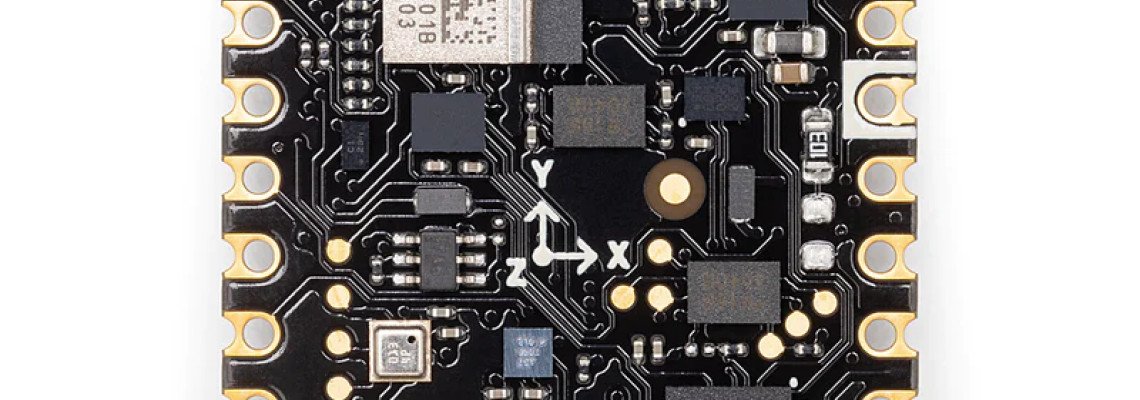
L'Arduino® Nicla Sense ME est notre plus petit facteur de forme à ce jour, avec une gamme de capteurs de qualité industrielle intégrés dans un encombrement réduit. Mesurez les paramètres de processus tels que la température, l'humidité et le mouvement. Plongez dans l'informatique de pointe avec de puissantes capacités de fusion de données. Créez votre propre réseau de détection sans fil de qualité industrielle avec les capteurs Bosch BHI260AP, BMP390, BMM150 et BME688 intégrés.
Zones cibles :
réseaux de capteurs sans fil, fusion de données, intelligence artificielle, détection de gaz.
Caractéristiques:
Module Bluetooth® ANNA-B112
- nRF52832 Système sur puce
- Microcontrôleur ARM® Cortex-M4F 64 MHz
- 64 Ko SRAM
- 512 Ko Flash
- FIFO mappés en RAM à l'aide d'EasyDMA
- 2x SPI (l'un est accessible via un en-tête de broche)
- 2x I2C (l'un est accessible via l'en-tête de broche)
- CAN 12 bits/200 ksps
- 2.400 - 2.4835 GHz Bluetooth® (5.0 via pile Cordio, 4.2 via ArduinoBLE)
- Antenne interne
- Oscillateur interne 32 MHz
- Tension de fonctionnement 1,8 V
Bosch BHI260AP - Hub de capteurs intelligents AI avec IMU intégrée
- Noyau de processeur de l'unité de fusion 2
- Processeur Synopsys DesignWare ARC™ EM4™ 32 bits
- Processeur RISC à virgule flottante
- Contrôleur micro DMA à 4 canaux/contrôleur de cache associatif à 2 voies
- IMU 6 axes Accéléromètre 16 bits 3 axes Gyroscope 16 bits 3 axes
- Fonctionnalités professionnelles
- Logiciel d'IA d'auto-apprentissage pour le suivi de la condition physique
- Analyse de la natation
- L'estime des piétons
- Orientation relative et absolue
- FLASH externe de 2 Mo connecté via QSPI
Capteur de pression haute performance Bosch BMP390
- Plage de fonctionnement : 300-1250 hPa
- Pression de précision absolue (typ.) : ± 0,5 hPa
- Pression de précision relative (typ.) : ± 3,33 hPa (équivalent à ±25 cm)
- Bruit RMS en pression à la résolution la plus élevée : 0,02 Pa
- Décalage du coefficient de température : ± 0,6 Pa/K
- Stabilité à long terme (12 mois) : ± 0,016 hPa
- Fréquence d'échantillonnage maximale : 200 Hz Tampon FIFO intégré de 512 octets
Magnétomètre 3 axes Bosch BMM150
- Plage magnétique typ.
- Axe X,Y : ±1300μT
- Axe Z : ±2500μT
- Résolution : 0,3 μT
- Non-linéarité : <1 % FS
Bosch BME688 Détection environnementale avec intelligence artificielle
- Plage de fonctionnement
- Pression : 300-1100 hPa
- Humidité : 0-100 %
- Température : -40 - +85°C
- Capteur de gaz eNose
- Déviation capteur à capteur (IAQ): ± 15% ± 15 IAQ
- Vitesse de balayage standard : 10,8 s/balayage
- Charge électrique pour scan standard : 0,18 mAh (5 scans - 1 min)
- Principales sorties de capteur
- Indice de qualité de l'air (QAI)
- Équivalents COV et CO2 (ppm)
- Résultat de l'analyse des gaz (%)
- Niveau d'intensité
Microcontrôleur ATSAMD11D14A-MUT
- Pont série vers USB
- Interface du débogueur
Exemples d'applications
L'Arduino® Nicla Sense ME est votre passerelle pour développer des solutions de réseau sans fil avec un développement rapide et une grande robustesse. Obtenez un aperçu en temps réel des caractéristiques opérationnelles de vos processus. Tirez parti des capteurs de haute qualité et des capacités de mise en réseau pour évaluer de nouvelles architectures WSN. La consommation d'énergie ultra-faible et la gestion intégrée de la batterie permettent un déploiement dans diverses capacités. WebBLE permet des mises à jour OTA faciles du micrologiciel ainsi que la surveillance à distance.
Gestion des entrepôts et des stocks :
Le capteur environnemental de l'Arduino® Nicla Sense ME peut détecter l'état de maturation des fruits, des légumes et de la viande permettant une gestion intelligente des biens périssables aux côtés du Cloud Arduino.
Détection industrielle distribuée :
Identifiez les conditions de fonctionnement au sein de votre machine, usine ou serre à distance et même dans des zones difficiles d'accès ou dangereuses. Détectez le gaz naturel, les gaz toxiques ou d'autres émanations dangereuses à l'aide des capacités d'intelligence artificielle de l'Arduino® Nicla Sense ME. Améliorez les niveaux de sécurité grâce à l'analyse à distance. Les capacités de maillage permettent un déploiement simple de WSN avec des exigences d'infrastructure minimales.
Conception de référence du réseau de capteurs sans fil :
Le facteur de forme Nicla a été spécifiquement développé chez Arduino® en tant que norme pour les réseaux de capteurs sans fil qui peut être adapté par les partenaires pour développer des solutions industrielles sur mesure. Prenez une longueur d'avance en développant des solutions personnalisées pour les utilisateurs finaux, notamment des appareils portables intelligents connectés au cloud et de la robotique autonome. Les chercheurs et les éducateurs peuvent utiliser cette plate-forme pour travailler sur une norme reconnue par l'industrie pour la recherche et le développement de capteurs sans fil qui peut raccourcir le délai entre le concept et le marché.
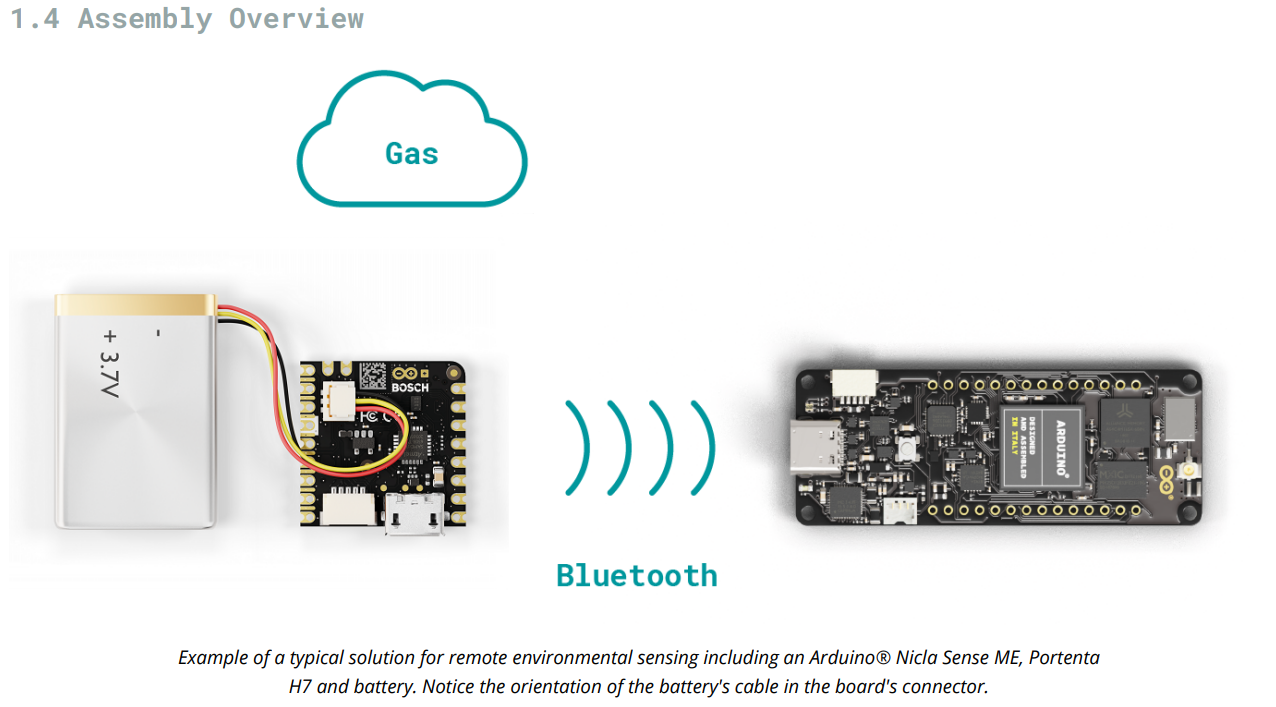
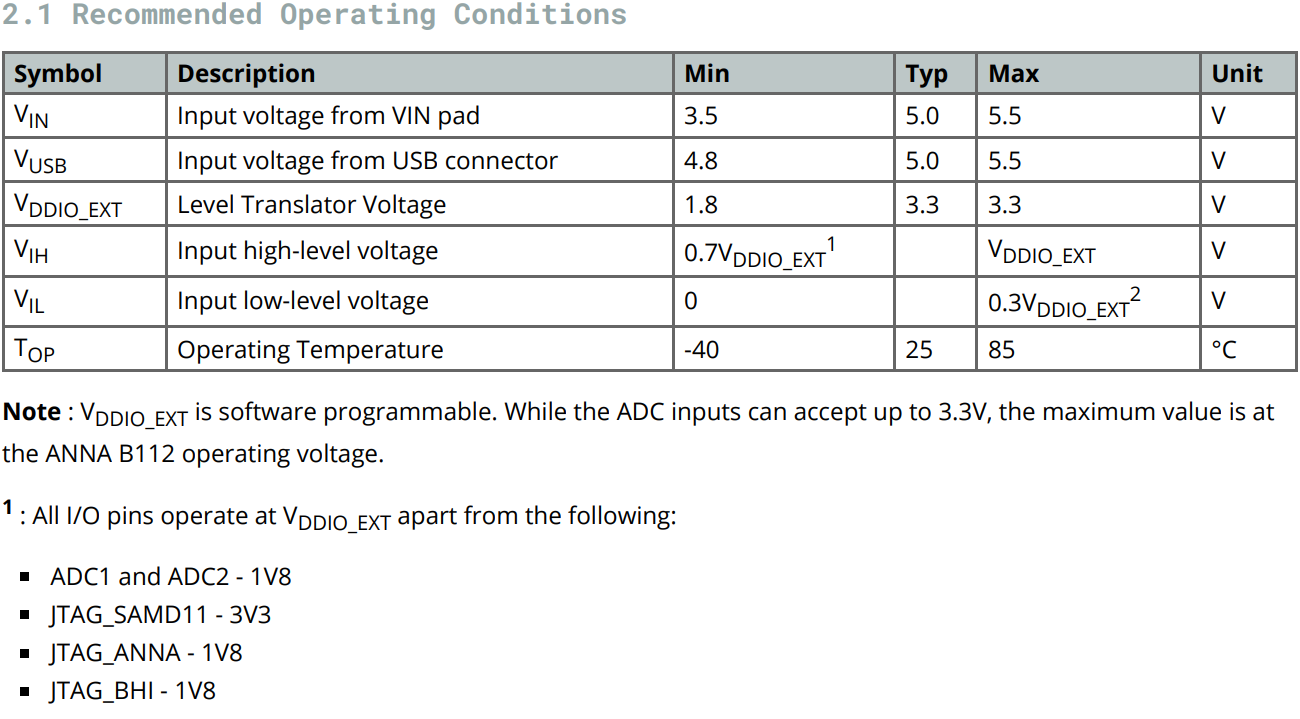
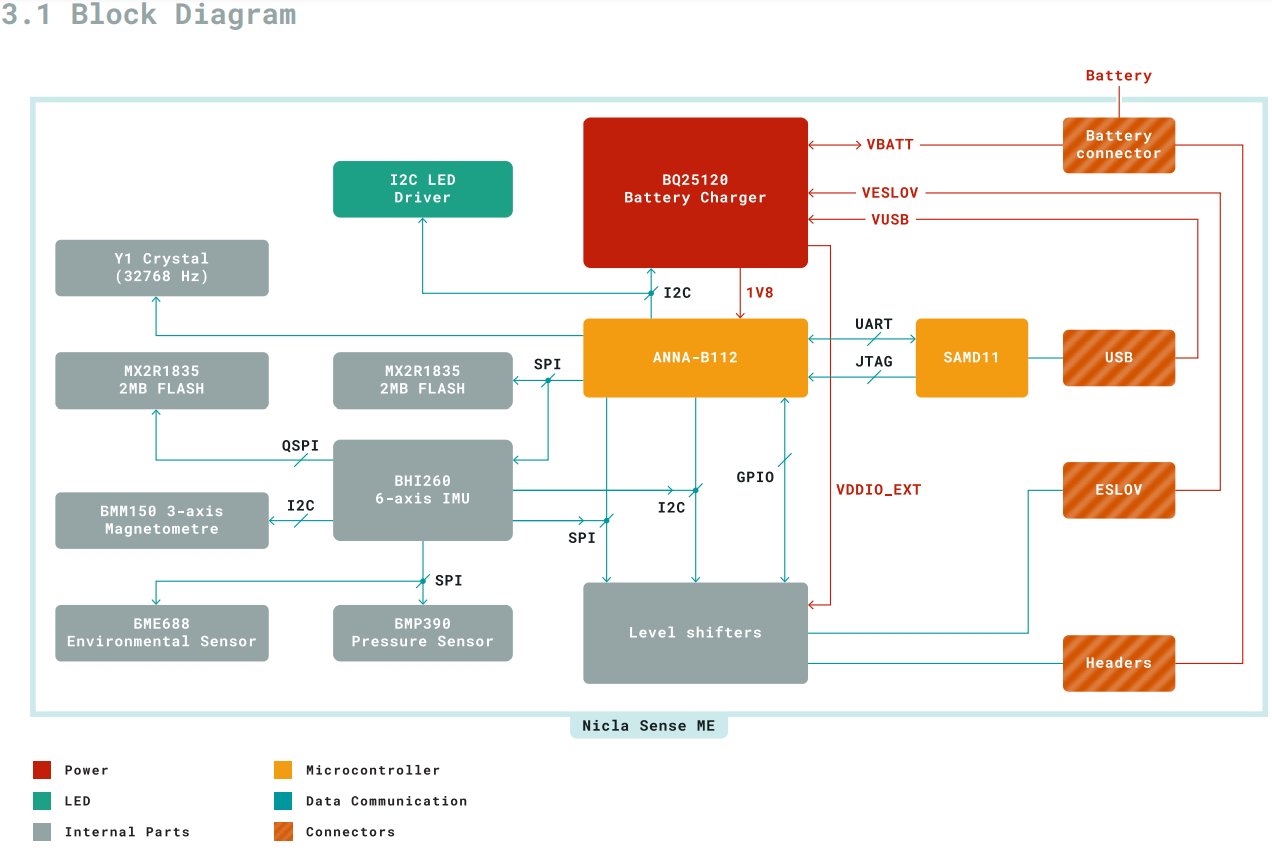
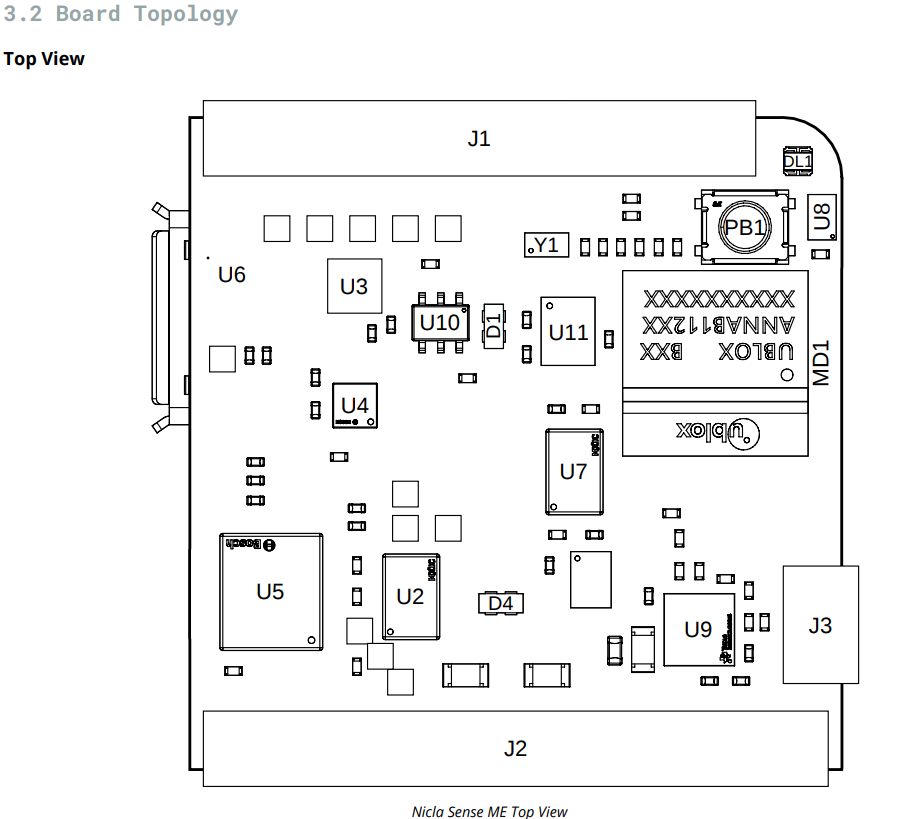

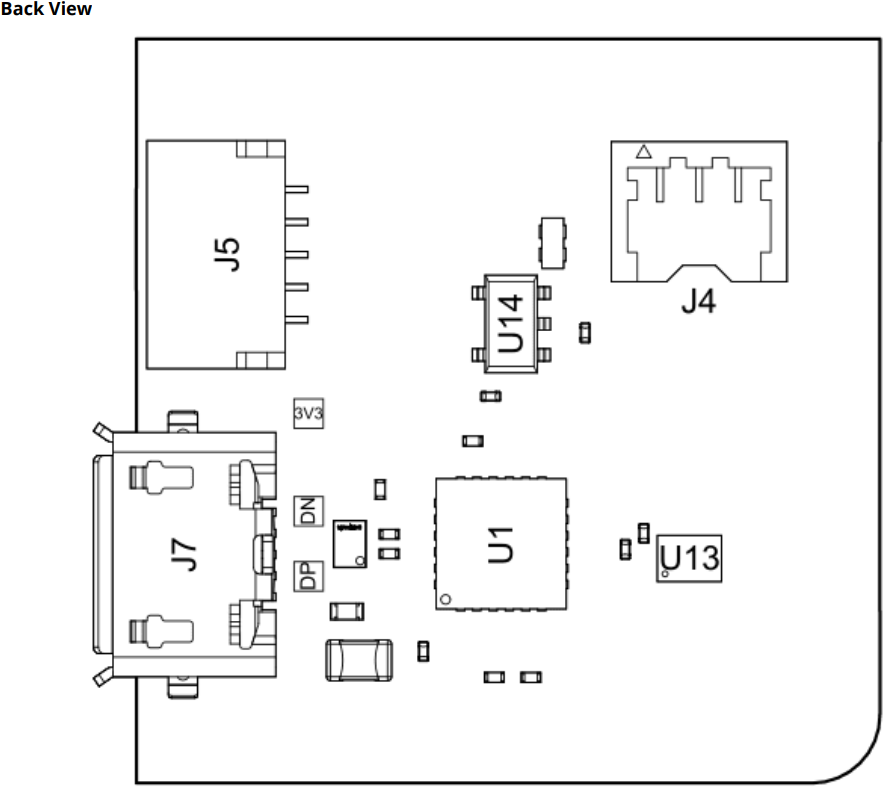

Microcontrôleur
L'Arduino® Nicla Sense ME est alimenté par un SoC nRF52832 dans le module ANNA-B112 (MD1). Le SoC nRF52832 est construit autour d'un microcontrôleur ARM® Cortex-M4 avec une unité à virgule flottante fonctionnant à 64 MHz. Les croquis sont stockés dans la mémoire FLASH interne nRF52832 de 512 Ko qui est partagée avec le chargeur de démarrage. 64 Ko de SRAM sont à la disposition de l'utilisateur. L'ANNA-B112 agit comme un hôte SPI pour le flash de 2 Mo d'enregistrement de données (U7) et l'IMU 6 axes BHI260 (U5). C'est également le secondaire pour la connexion BHI260 (U5) I2C et SPI. Alors que le module lui-même fonctionne à 1,8 V, un décaleur de niveau peut ajuster le niveau logique entre 1,8 V et 3,3 V en fonction du LDO défini dans BQ25120 (U9). Un oscillateur externe (Y1) fournit un signal de 32 KHz.
Système de capteur intelligent Bosch BHI260 avec IMU 6 axes intégrée
Le Bosch BHI260 est un capteur programmable ultrabasse consommation, combinant un processeur principal Fuser2, une IMU 6 axes (gyroscope et accéléromètre) avec un cadre logiciel de fusion de capteurs. Le BHI260 est un noyau de capteur intelligent (hébergant un système de reconnaissance programmable), qui gère la communication avec d'autres capteurs sur l'Arduino Nicla Sense ME via des connexions I2C et SPI. Il existe également une mémoire flash dédiée de 2 Mo (U2) utilisée pour stocker le code d'exécution sur place (XiP) ainsi que le stockage de données, telles que les données d'étalonnage de l'algorithme de fusion de capteurs Bosch (BSX). Le BHI 260 est capable de charger des algorithmes personnalisés qui peuvent être formés sur un PC. L'algorithme intelligent généré opère alors sur cette puce.
Capteur environnemental Bosch BME688
L'Arduino Nicla Sense ME est capable d'effectuer une surveillance environnementale via le capteur Bosch BME688 (U6). Cela offre des capacités de détection de la pression, de l'humidité, de la température ainsi que des composés organiques volatils (COV). Le Bosch BME688 effectue la détection de gaz via une matrice de semi-conducteurs à oxyde métallique eNose avec un cycle de balayage de gaz typique de 10,8 secondes.
Capteur de pression Bosch BMP390
La précision et la stabilité de qualité industrielle des mesures de pression sont fournies par le BMP390 (U3) conçu pour une utilisation prolongée, avec une précision relative de ± 0,03 hPa et une valeur efficace de 0,02 Pa en mode haute résolution. Le Bosch BMP390 convient aux mesures rapides avec un taux d'échantillonnage de 200 Hz, ou à une utilisation à faible consommation avec un taux d'échantillonnage de 1 Hz, consommant moins de 3,2 µA. U3 est contrôlé via une interface SPI vers le BHI260 (U2), sur le même bus que le BME688 (U6).
Magnétomètre 3 axes Bosch BMM150
Le Bosch BMM150 (U4) fournit des mesures précises sur 3 axes du champ magnétique avec une précision au niveau de la boussole. Combiné avec l'IMU BHI260 (U2), la fusion de capteurs Bosch peut être utilisée pour obtenir une orientation spatiale et des vecteurs de mouvement de haute précision pour la détection de cap dans des robots autonomes ainsi que pour la maintenance prédictive. Il existe une connexion I2C dédiée au BHI260 (U2), agissant en tant qu'hôte.
LED RVB
Un pilote de LED I2C (U8) pilote la LED RVB (DL1) et est capable d'une sortie maximale de 40 mA. Il est piloté par le microcontrôleur ANN-B112 (U5).
Pont USB
Le microcontrôleur SAMD11 (U1) sert à la fois de pont USB et de contrôleur JTAG pour l'ANNA-B112. Un traducteur de niveau logique (U13) agit comme un intermédiaire pour traduire la logique 3,3 V en 1,8 V pour l'ANNA-B112. La tension de 3,3 V est générée à partir de la tension USB par un LDO (U14).
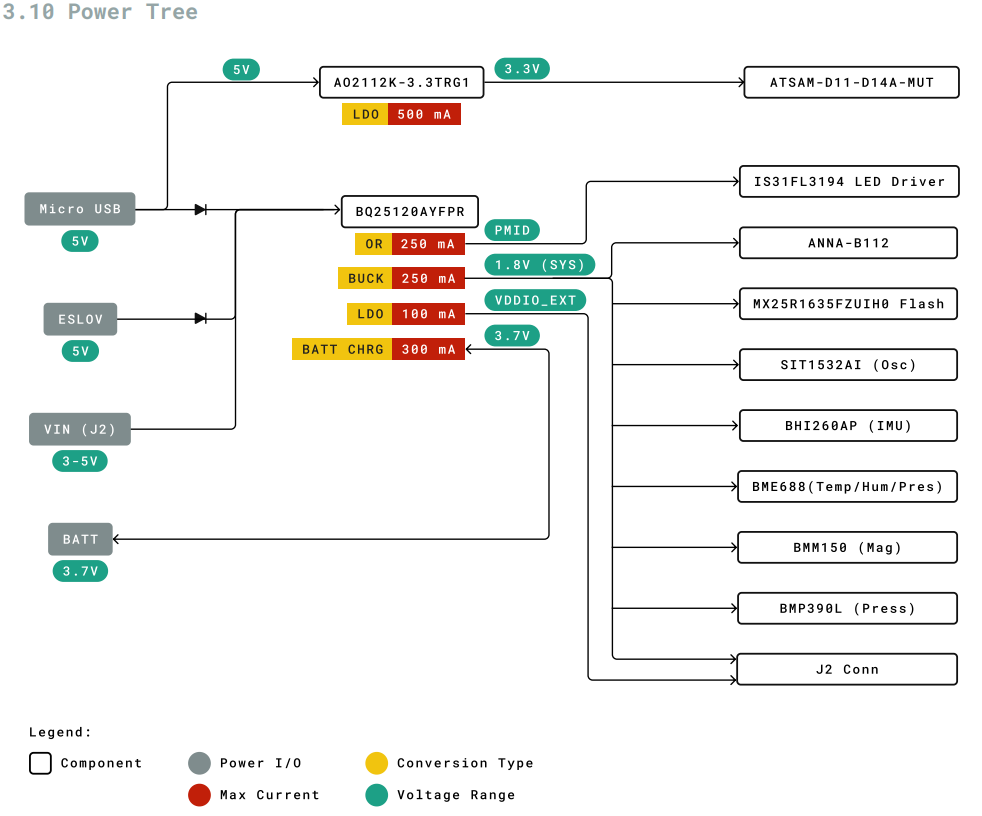
L'Arduino Nicla Sense ME peut être alimenté via micro USB (J7), ESLOV (J5) ou VIN. Celle-ci est convertie en tensions pertinentes via le circuit intégré BQ2512BAYFPR (U9). Une diode Schottky fournit une protection contre l'inversion de polarité aux tensions USB et ESLOV. Lorsque la tension est fournie via le micro USB, un régulateur linéaire de 3,3 V alimente également le microcontrôleur SAMD11 utilisé pour la programmation de la carte ainsi que pour JTAG et SWD. Le driver LED (U8) et les LED RGB (DL1) sont pilotés par une tension boost de 5V. Tous les autres composants fonctionnent sur le rail 1,8 V régulé par un convertisseur abaisseur. PMID agit comme un commutateur OU entre VIN et BATT et fait fonctionner le pilote de LED. Toutes les E/S réparties sur les broches sont alimentées par un convertisseur de tension bidirectionnel fonctionnant sur VDDIO_EXT.
De plus, le BQ25120AYFPR (U9) prend également en charge une batterie LiPo/Li-ion 3,7 V à cellule unique connectée à J4, permettant l'utilisation de la carte comme réseau de capteurs sans fil. Le courant de charge de la batterie est réglé sur 40 mA avec un courant de terminaison de 4 mA (10 %).
Fonctionnement du conseil:
Mise en route - IDE
Si vous souhaitez programmer votre Arduino® Nicla Sense ME hors ligne, vous devez installer l'Arduino® Desktop IDE [1]. Pour connecter l'Arduino® Nicla Sense ME à votre ordinateur, vous aurez besoin d'un câble micro USB. Cela alimente également la carte, comme indiqué par la LED. Le noyau Arduino fonctionne sur l'ANNA-B112 tandis que le cadre Bosch Smart Sensor fonctionne sur le BHI260.
Mise en route - Éditeur Web Arduino
Toutes les cartes Arduino®, y compris celle-ci, fonctionnent prêtes à l'emploi sur l'éditeur Web Arduino® [2], en installant simplement un plugin simple.
L'éditeur Web Arduino® est hébergé en ligne, il sera donc toujours à jour avec les dernières fonctionnalités et la prise en charge de toutes les cartes. Suivez [3] pour commencer à coder sur le navigateur et téléchargez vos croquis sur votre tableau.
Mise en route - Cloud Arduino
Tous les produits compatibles Arduino® IoT sont pris en charge sur Arduino® Cloud, ce qui vous permet d'enregistrer, de représenter graphiquement et d'analyser les données des capteurs, de déclencher des événements et d'automatiser votre maison ou votre entreprise.
Mise en route - WebBLE
L'Arduino Nicla Sense ME offre la possibilité d'effectuer des mises à jour OTA des micrologiciels NINA-B112 et BHI260 à l'aide de WebBLE.
Mise en route - ESLOV
Cette carte peut servir de secondaire à un contrôleur ESLOV et mettre à jour le micrologiciel via cette méthode.
Exemples de croquis
Des exemples de croquis pour l'Arduino® Nicla Sense ME peuvent être trouvés soit dans le menu "Exemples" de l'IDE Arduino®, soit dans la section "Documentation" du site Web Arduino® Pro
Ressources en ligne
Maintenant que vous avez parcouru les bases de ce que vous pouvez faire avec la carte, vous pouvez explorer les possibilités infinies qu'elle offre en consultant des projets passionnants sur ProjectHub [5], la référence de la bibliothèque Arduino® [6] et la boutique en ligne [7] où vous pourrez compléter votre carte avec des capteurs, des actionneurs et plus encore.
Récupération de carte
Toutes les cartes Arduino® ont un chargeur de démarrage intégré qui permet de flasher la carte via USB. Dans le cas où un croquis bloque le processeur et que la carte n'est plus accessible via USB, il est possible d'entrer en mode bootloader en appuyant deux fois sur le bouton de réinitialisation juste après la mise sous tension.

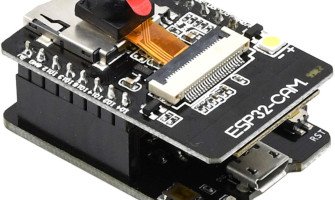
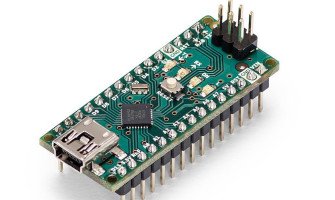
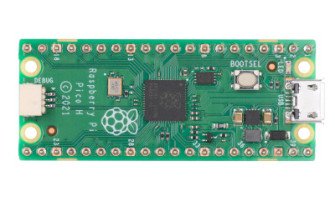
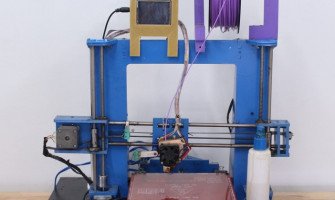
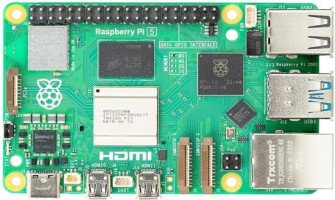
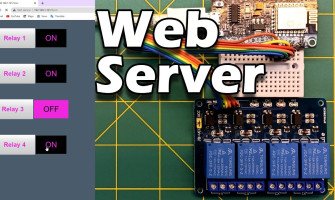
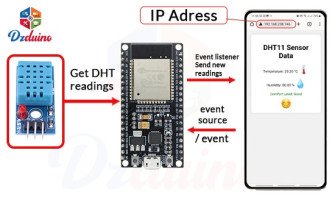
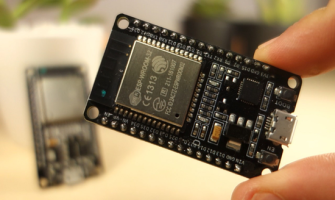
Laissez un commentaire